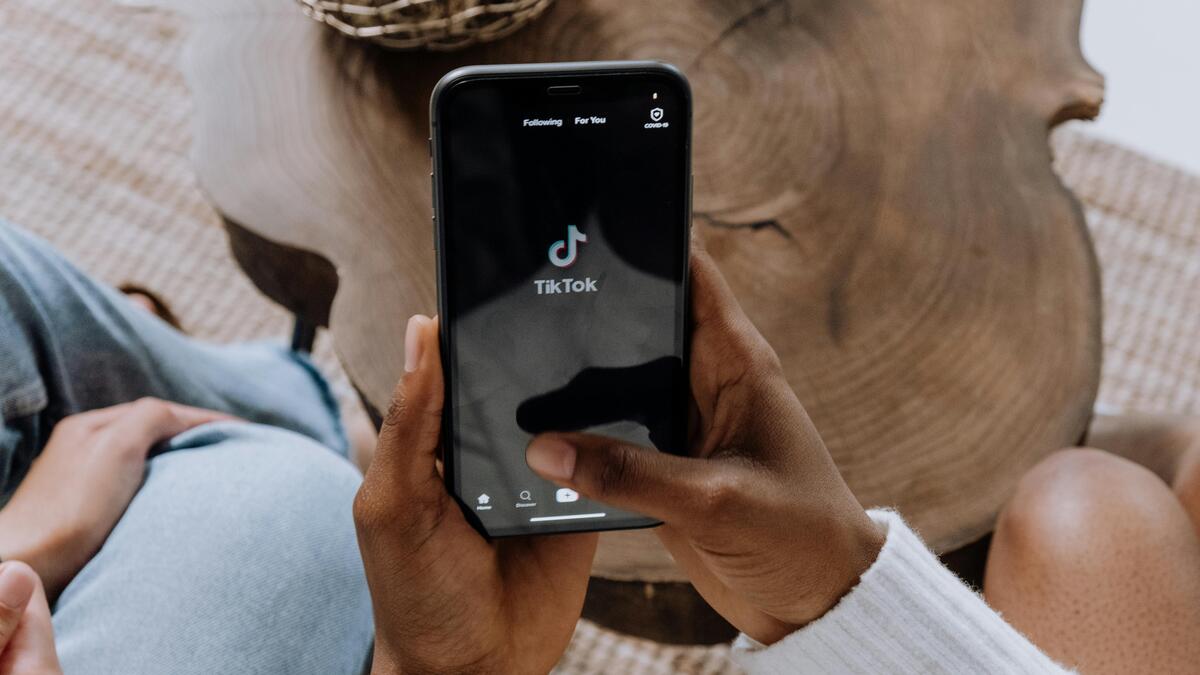Who's influencing your favorite influencer?

According to am ASU study on social media influencer marketing, nearly 29% of participants believe that influencers are being compensated when they are not and vice versa, a statistic that is troubling to ASU Professor of Practice David Franklyn. Photo courtesy Pexels
When your favorite influencer gets on Instagram or TikTok to tout a product, what goes through your mind?
Do you think the influencer actually uses the product? Do you wonder whether they are being paid for pushing the product? Or do you even care?
A new study explored these questions and discovered a lot of confusion around this issue for followers. According to Arizona State University Professor of Practice David Franklyn, nearly 29% of the participants believe that the influencers are being compensated when they are not and vice versa.
That’s because most influencers don’t make it clear that they are being paid to push a product, even though it is required by law. This can be deceptive for viewers, particularly for the target of many of these messages, which is often teens and young adults.
Franklyn, the executive director of the McCarthy Institute at the Sandra Day O'Connor College of Law, and ASU Law student Leo Yang worked on the study, which was released this spring.
ASU News spoke with Franklyn about the study, its findings and the problems that 25 years of unregulated communication on the internet has created.
Note: Answers have been edited lightly for length and/or clarity.
Question: What made you decide to research the blurred lines between paid and unpaid advertising by influencers on platforms like TikTok and Instagram?
Answer: The impetus for the study started around 2015, in the run-up to the 2016 presidential election, with the emergence of Donald Trump as a powerful political voice and the prevalence of the idea of "fake news."
That got me thinking about fake or misleading information about products — whether it be political products, like a candidate, or commercial products, like a vacuum. With the rise of target advertising, search engine optimization tools and brand owners, I became interested in the whole subject of internet advertising and marketing.
I had done research with a friend on Google searches. What we discovered was that people could not tell the difference between sponsored and organic search results.
I thought I would extend that study to social media. So, this is a follow-up of that.
Q: The goal of the study was to determine whether Instagram and TikTok users could distinguish between paid and unpaid influencer marketing content. Your findings indicated that there was evidence of two-way blurring? Can you explain your discoveries? Were they unexpected?
A: We discovered that approximately 29% of the users couldn’t tell the difference between paid and unpaid advertising.
That is a significant amount of people. I was also interested in whether they cared, because social attitudes about nondisclosure have changed. What we found in more recent research is that nearly half the people, 40–50%, don’t care if the product reviews were paid for by brand owners.
We were surprised. Why wouldn’t you want to know that? The answer was that people have become desensitized and think everything is a hustle and the entertainment value of this outweighs their need for truth. The alleviation of boredom is more important than truth for about 40–50% of the population.
Q: Are there risks inherent in these types of deceptions — particularly for younger audiences who are often targeted on social media platforms?
A: Many young people in particular think, “If I want to buy something, I’ll buy it. I don't care if the influencers are paid or unpaid.” That's because they grew up in the sea of overstimulation.
But the mere fact that many don’t care doesn’t mean we need to ignore it or accept that this kind of nondisclosure of sources is growing in internet advertising.
I think the risks are that people will not make well-informed purchasing decisions. ... The other danger is that (this problem) is going to grow. We found out from major corporations that they go out and find influencers, write the script and the influencer reads it exactly how it was written and then they get paid. (The corporations) leave it up to the influencer to disclose that they are being paid, and they don't monitor them.
Q: Federal law requires influencers to clearly and conspicuously label content for which they are being paid. Are these influencers violating that law? Have there been cases where influencers faced legal consequences for not being transparent about being paid to push a product?
A: Yes, they are violating the law. Many instances in our work showed that they were not clearly and conspicuously labeling their content.
By far the most effective label would be, “This is an advertisement.” It should say that in a bold place on the top and bottom of the ad or people will not pick up on it. Our research shows that a lot of those labels are not clear enough or conspicuous enough for viewers to know that they are being paid for by someone.
The most famous case where an influencer faced legal consequences was with Kim Kardashian. She was charged in 2022 by the Securities and Exchange Commission for pedaling a crypto asset security and not disclosing that she was being compensated $250,000 by the company selling the security. She ended up paying more than $1 million in penalties and was required to return $250,000 to the company that hired her.
Q: What kind of policies could realistically address this problem? How likely is it that policies will be put in place?
A: We need to start thinking about brand-owner responsibility and disclosure as it relates to social media. Right now, there isn’t any. A brand owner who wants to pay an influencer on social media should require the influencer to follow the law that requires clear and conspicuous labels for the content for which they are being paid. But the brand owners don't enforce them.
Given that there isn't a public outcry over this, I don't think it is very likely going to happen. ... The internet quietly degraded between 1999 and 2015. Over that time, the public gradually lost its ability to discern the difference between true and untrue information and began to question whether they should even care about it.
Here we are 25 years into the internet, and we have a lot of problems.
Q: Does our right to freedom of speech cover communication — whether it is advertising or misinformation — that is put on social media?
A: Our First Amendment does not protect false speech, so it is not a freedom to deliberately misrepresent facts or withhold important information.
Why isn’t it stopped? Because we don't have a government agency that’s financed enough or active enough to police the volume of misinformation that is being spread. And apart from that, we don't have the political will to be fed up.
More Law, journalism and politics

Annual John P. Frank Memorial Lecture enters its 26th year
Dahlia Lithwick, an MSNBC analyst and senior legal correspondent at Slate, is the featured speaker at the School of Social Transformation’s 26th annual John P. Frank Memorial Lecture on…

The politics behind picking a romantic partner
A new study reveals the role that politics play when picking out a romantic partner — particularly for older adults.“Findings show that politics are highly salient in partner selection across gender…

Tips to make tax season less taxing
When it comes to highly unpleasant experiences, filing taxes is probably up there with root canals — which is why people put off doing them. But tax season is here, and in an effort to alleviate…


